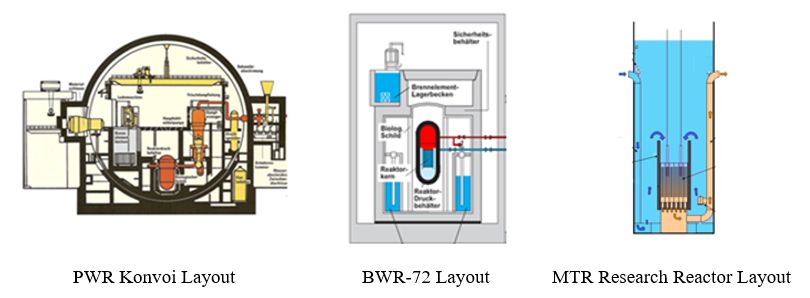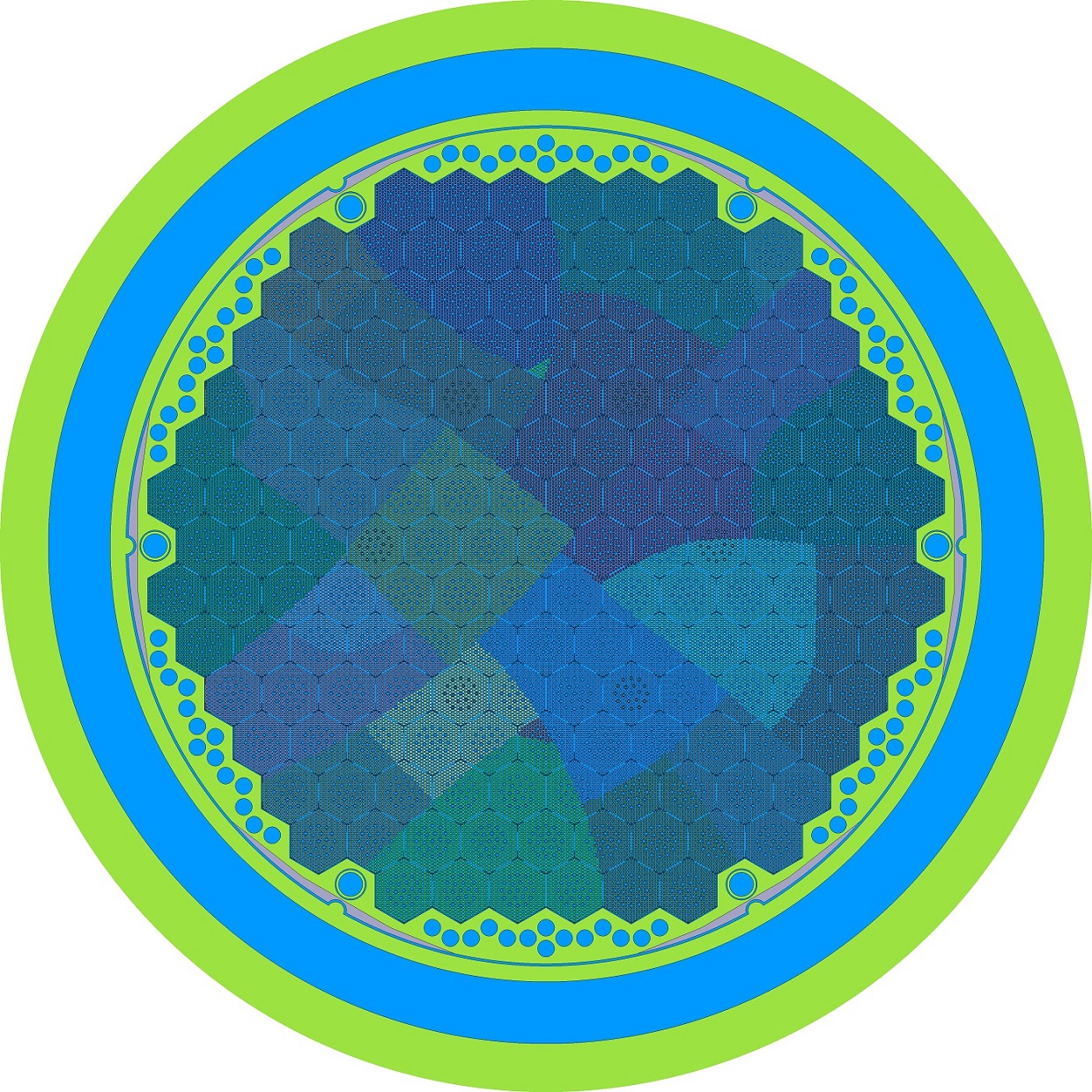Research goal
Research is focused on providing validated numerical tools for the safety assessment of different reactor designs. These activities are embedded in the Energy Programme of the Helmholtz Association of Research Centres (HGF) and the NUSAFE Programme of the Karlsruhe Institute of Technology (KIT). The numerical simulation tools describe the behaviour of nuclear power plants under conditions of design basis and accidents with core degradation. They are the focus of safety analyses, safety reviews with deterministic and probabilistic methods.
Research focus
The Reactor Physics and Dynamics Group (RPD) is concentrated on technical areas essential for safety assessment e.g., core and plant thermal hydraulics, reactor static and dynamics, reactor safety as well as with methods for uncertainty quantification and methods and algorithms for High Performance Computer (HPC). The investigations are dealing with any reactor type under operation, construction or development in the world in order to be able to quantify the radiological risk that may arise from them in the hypothetical case of an accident including the estimation of the radiological consequences of severe accidents such as FUKUSHIMA. Among other, Light Water Reactors (PWR, BWR, VVER), water-cooled Small Modular Reactors (SMR) and MTR-type research reactors are the subject of investigations.

The methods and tools for safety assessment under development, validation and improvements are dealing with different physical domains, which can be encountered in the core, reactor pressure vessel, main circuits and the containment of a nuclear power plant under normal or accidental conditions. The following branches are of special interest:
1. Multiphysics and multiscale methods for improved safety of LWRs and WC-SMRs. More details about it can be found in: www.multiphysics.kit.edu. In this area, the following research fields are explored:
- Development of in-house thermal hydraulic codes for improved simulation of the thermal hydraulic phenomena in PWR, BWR, VVER and WC-SMRs (SUBCHANFLOW, TWOPORFLOW)
- Development of neutronic solvers for the improved neutronic analysis of PWR, BWR, VVER and WC-SMRs (PARAFISH PN, KANECS SPN)
- Development of Multiphysics coupled codes including Thermal hydraulic, neutronic and thermo-mechanics e.g. PARCS/TWOPORFLOW, Serpent2/Subchanflow/Transuranus, Serpent2/Subchanflow for LWR, SMR, and MTR-reactors
- Multiscale/-physics methods for improved analysis of the 3D phenomena in the core, Reactor Pressure Vessel (RPV), and circuits of LWRs and WC-SMRs e.g., TRACE/PARCS/SUBCHANFLOW/OpenFOAM, TRACE/PARCS/TWOPORFLOW.
2. Beyond design basis accidents in LWR and WC-SMRs including the radiological impact. In this area, the following research fields are focus of investigations:
- Analysis of severe accident sequences leading to core degradation considering accident management measures and including radiological source term prediction, and estimation of the radiological consequences of severe accidents in PWR, VVER, BWRs, and WC-SMRs
- Development of models for Advanced Tolerant Fuel (ATF) for the improvement of the severe accident code ASTEC, MELCOR, etc. in close cooperation with the QUENCH team and ASNR
- Development and application of uncertainty quantification tools (KATUSA) for the estimation of uncertainty band of analytical results obtained with codes like ASTEC or MELCOR simulating severe accident sequences of any reactor type. The participation in the EU MUSA project enhanced the knowledge in the area of severe accidents codes and uncertainty tools.
- Exploration of AI-methods for the development of surrogate models for integral severe accident codes such as ASTEC in predicting severe accident phenomena in collaboration with SCC.
The common goal of these Reactor Safety research is to improve the prediction capability of numerical simulation tools used for safety evaluations, safety demonstration of any kind of nuclear power plants, specifically LWRs and WC-SMR. These activities are embedded in long-term bilateral co-operations with international partners such as the US NRC CAMP-Programme of the US NRC (TRACE, RELAP5, PARCS: devoted to design basic accidents) and the CSARP-Programme (MELCOR: devoted to severe accidents) and the French ARSN (ASTEC: devoted to severe accidents).
Code validation: The validation of computer codes in reactor safety is a central and indispensable step to enhance the confidence on computer codes for safety assessment. For this purpose, measurement data of experiments from KIT (QUENCH, COSMOS) or external institutions and nuclear power plant data are used for it.
Quantification of the Code’s uncertainties: The quantification of the uncertainty of code’s predictions is mandatory in the frame of the BEPU-approach. For it, international platforms such as URANIE, DAKOTA, and tools (SUSA) are being used and applied. An in-house code KATUSA was developed at KIT and applied to estimate the uncertainty of codes such ASTEC in predicting source term.
Education and Training: The expertise of the RPD group in key-areas of reactor safety and nuclear engineering is transferred to a wider audience and to the younger generation through various teaching and training options, such as
- Internships / student research projects, Master theses, Doctoral theses
- Lectures on reactor physics, reactor dynamics and safety analysis methods at the Mechanical Engineering Faculty of KIT
- Training Courses in the Framatome Nuclear Professional School at KIT (see https://www.fps.kit.edu/)
Summer schools such as the Frederic Joliot / Otto Hahn Summer School jointly organised by KIT and CEA on Nuclear Reactors "Physics, Fuel, and Systems” (see https://www.fjohss.eu/)

